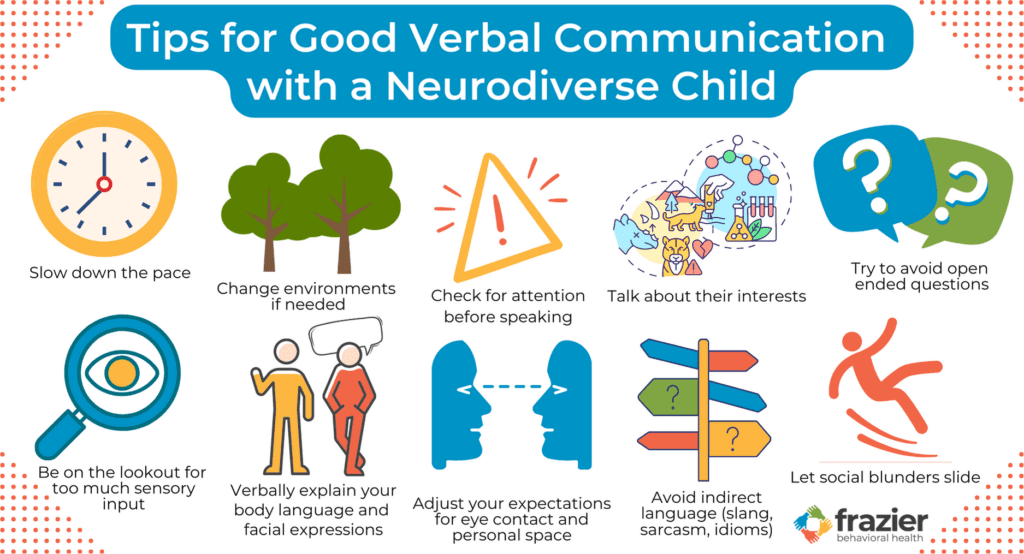Are you looking to improve your neurodiverse child’s daily life? We suggest creating visual supports!
Visual supports help with breaking down the language comprehension barrier that many individuals with Autism experience. Many individuals with Autism struggle with verbal language but are strong visual learners. Visual supports can be an effective communication strategy, including pictures, symbols, or printed words. These pictures can be used alone, or in combination with auditory output, to help your child maintain attention, understand spoken language, or sequence and organize their environment.
If you are not sure what kind of visual supports to develop for your child, your child’s intervention specialist, BCBA, or speech-language pathologist can be great resources for identifying appropriate visual strategies. They can help develop individualized supports that facilitate communication. The format of each visual support should be dependent on your child’s visual scanning abilities – for individuals with weaker scanning it is important to have a smaller number of choices with a simple layout while the number and complexity of choices can be higher for those with good scanning capacity.
Using Visual Supports
Visual supports can come in handy when your child is attempting to make a choice. Your child may not attend to an auditory list of options but may attend to visual options. By having their available options in a visual format (pictorial or written), your child can scan all of their options and make their own choices, to help reduce frustration.
Visual supports may also increase appropriate behaviors and replace challenging behaviors. We recommend that you use these supports before the challenges begin (or at least shortly thereafter). You can be proactive and supply your child with visual support, before asking them to switch activities or engage in something new.
Have you ever asked your child to do a task that involved multiple steps, and they stopped after the first step? A visual support can help. When completing multi-step directions, having pictures or a written checklist of each step can help with comprehension of what is expected of them. It helps to eliminate details getting lost in translation. This reference guide will save everyone from the frustration of having to ask for help or repeating instructions.
Common Types of Visual Supports
A “First/Then” board is a visual support that includes pictures or text, and is used to provide information to the child for what they can expect to happen next. Often, the ‘first’ section involves a task that the child is expected to complete, and the ‘then’ section is a preferred item/activity. This helps motivate your child to complete a task, knowing their preferred activity will come next.
Social stories can help reduce the anxiety of not knowing what is expected or what will happen next. A social story lays out each step of what will happen at an event or outing. Social stories can include a list of behavioral rules or expectations for a particular setting. They should be written in a direct, straightforward manner with a beginning, middle, and end but be easy to follow with a clear and consistent theme.
Visual schedules provide your child with information about what is happening throughout the day, the order in which they will occur, and how long each activity will take. As adults, we have become incredibly reliant on our technology and event calendars. We thrive on the predictability of the day. The need for predictability and order is even more important for our neurodiverse child, and a visual schedule can help with that.
It is important to provide our loved ones with a way to express their feelings. Some kids use a visual chart that shows a variety of emotions, where the child can scan the chart and point to the corresponding picture of how they are feeling. Other kids use a more elaborate system, like a 5-point scale, to rank their level of emotion and the strategies they can use to self-regulate. A therapist can help if you are unsure where to start.
There are a few basic visuals that parents can carry around with them all the time (even on the go), to help their non-verbal or minimally-verbal neurodiverse child:


